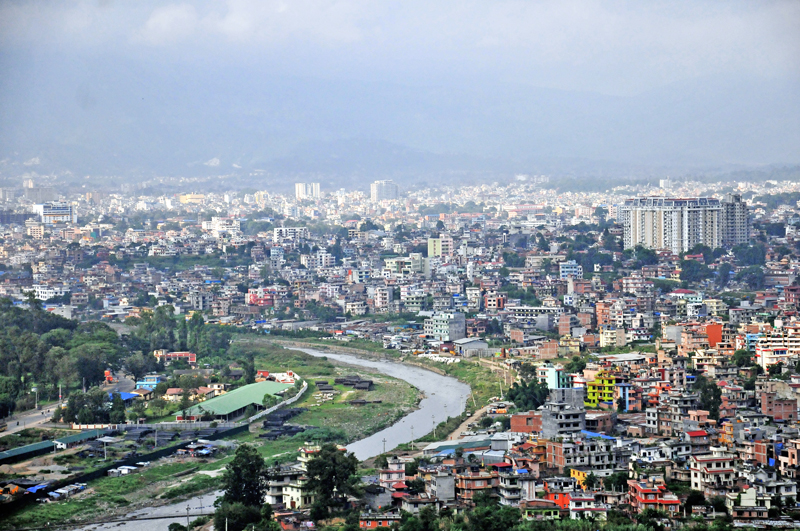Valley picked for air quality improvement project
Kathmandu, September 6
Several researches and studies have time and again proved Kathmandu Valley to be the most polluted city in the world. Conversely, there have been a number of studies which indicate that the quality of air in Kathmandu Valley is within a healthy range.
According to Department of Environment, the Ratnapark-based station, which came into operation on August 9, measurement of particulate matter concentration in the air is continuous.
The data collected by the Ratnapark-based station shows very high concentration of dust particles, especially particulate matter 10 (PM 10) and PM 2.5 in the air. The station measured 188 micrograms of dust particles per cubic metre the highest since it began operation on August 22.
In 2002, the Danish government had installed seven air quality monitor stations in the Valley. Five of these stations were built in Machchegaun, Kirtipur, Patan, Putalisadak, and Bhaktapur respectively and two in Thamel.
After the stations were handed over to the Nepali government in 2008, the government transferred the onus to the Environment and Public Health Organisation. However, a misunderstanding between the government and ENPHO led the stations to be closed in 2009.
Therefore, when the 17th World Clean Air Congress, which was held in Busan of Korea from 29 August to 2 September this year, selected Kathmandu for launching air quality improvement programmes as well as air quality ranking system, the project was warmly received.
Kathmandu Metropolitan City Office reported that only five cities from the whole of Asia were selected for the project to improve air quality, namely from Japan and the Philippines. “It means the highest standard of scientific air quality researches will be conducted in Nepal by international organisations.
The report of Kathmandu’s air quality will be presented during the 18th World Air Congress in 2018.” a participant of Congress and chief of Environment Management Division of KMC, Rabin Man Shrestha, told The Himalayan Times.
He stated that this is an opportunity to get reliable data on air pollution and opportunity to make clean eco-friendly mechanism for the government of Nepal. “The main benefit of this programme is that we will have exact and reliable data on the air quality of Kathmandu,” Division chief Shrestha added, “International studies not only check the pollution levels but also infrastructure development and environment-friendly activities in the capital city.”
While the available data and regular air quality monitoring system in Nepal is questionable, in recent times, the government of Nepal has resumed air quality monitoring in the Kathmandu Valley by installing a station at Ratnapark seven years after the previous monitoring stations were shut down.






